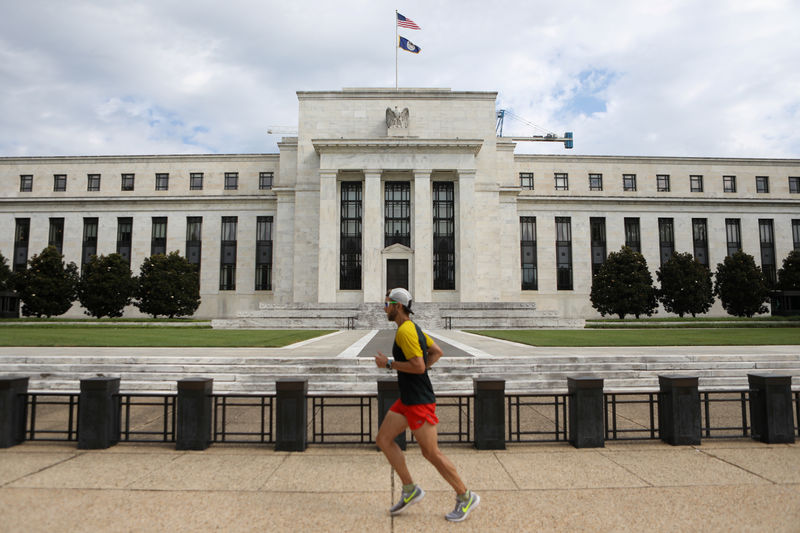By Yasin Ebrahim
Investing.com – The Federal Reserve kept rates unchanged Wednesday, and reiterated its commitment to maintaining easy monetary policy measures for some time.
The Federal Open Market Committee left its benchmark rate unchanged in the range of 0% to 0.25%.
The low-rate environment will continue for some time, with policymakers backing rates to remain unchanged through 2022. The Fed's interest-rate outlook for 2020, 2021 and 2022 was lowered to 0.1% from previous projections in December of 1.6%, 1.9% and 2.1% respectively, the Fed's Summary of Economic Projections showed.
"The committee expects to maintain this target range until it is confident that the economy has weathered recent events and is on track to achieve its maximum employment and price stability goals," the Fed said.
The decision comes as the central bank continues to roll out its lending programs to support the economy, which officially entered a recession in February, data earlier this week showed.
A surprise upturn in U.S. hiring in May, as reported last week, stoked some investor hopes that the economy is shaping up for a speedier recovery, but the Fed slashed its growth forecasts for the years ahead amid uncertainty over the impact from the pandemic.
The economy is expected to contract by 6.5% in 2020, down from an estimate for 2% growth previously, but return to growth, albeit well below previous estimates, in 2021 and 2022. The Fed expects the economy to grow by 5% next year, and 3.5% in 2022, up from previous estimates of 1.9% and 1.8%, respectively.
The unemployment rate for the year is expected to come in at 9.3%, up from 3.5% previously, but eventually, fall to 5.5% by 2022.
The pace of inflation, which will continue to be the key driver for future monetary policy, is forecast to cool to a rate of 0.8%, down from 1.9% previously. While core-PCE inflation for 2021 was revised lower to 1.5% from 2%.
The wave of stimulus from the Fed has taken its balance sheet above $7 trillion from about $4 trillion just before the pandemic struck in the U.S. in early March. But the central bank has no plans to rein in quantitative easing, pledging to maintain the current pace of bond purchases over the coming months to support the flow of credit to households and businesses. Purchases over the coming months will be made across a range of debt including Treasuries, agency residential, and commercial mortgage-backed securities.
